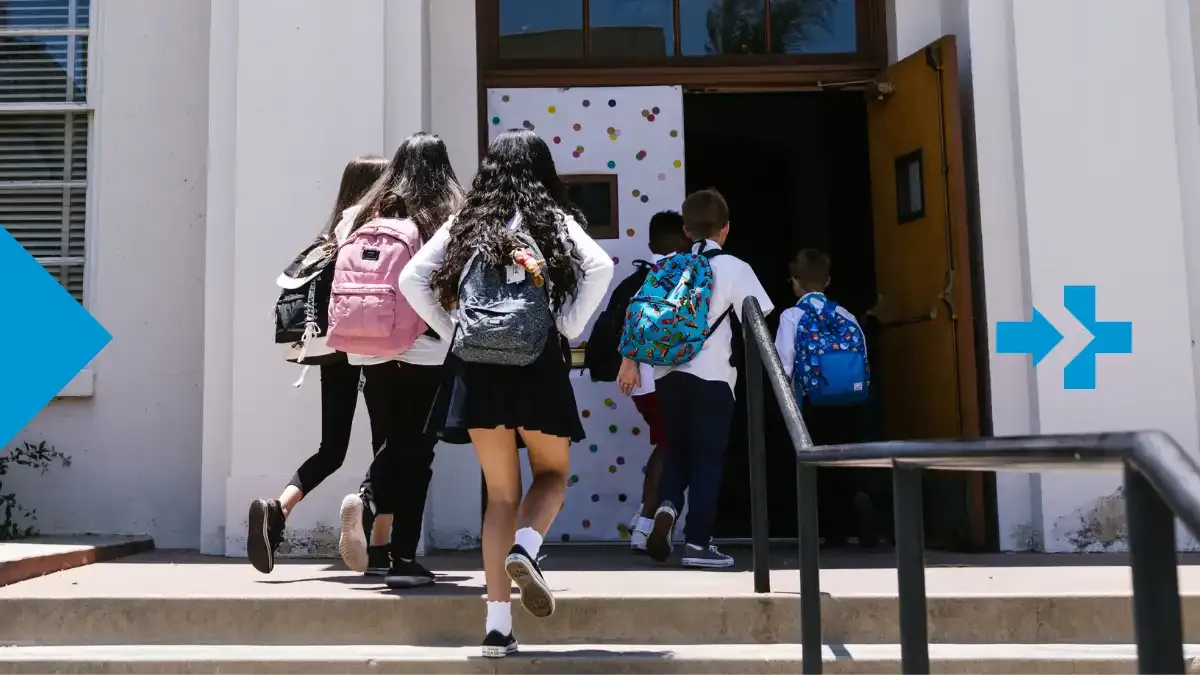
Back to School Starts Now: Why Summer Is the Smartest Time to Send Money
For millions of Latin American families, the back-to-school preparation begins well before the first bell rings. While children enjoy their summer vacations, parents and guardians are already budgeting for uniforms, notebooks, and fees. Crucially, many of these households rely on remittances – money sent by loved ones abroad – to cover education costs. Remittances provide a lifeline that keeps kids in school. Studies show that when families receive money from abroad, they significantly increase spending on education (one analysis found about a 53% increase across Latin America). These funds help purchase school supplies, pay tuition or enrollment fees, and ensure children have what they need to succeed academically. By supporting family members early (long before classes resume), overseas relatives help ease the financial burden and stress of the upcoming school year.
Early Remittances: A Back-to-School Lifeline for Families
Timely summer remittances can mean the difference between a child starting the year with the proper materials or falling behind. For example, Mexico is the region’s largest remittance receiver – $55.9 billion from the U.S. alone in 2022 – and those funds are mainly used for necessities like food and clothing, but also importantly for housing and tuition. In other words, education is a key use of the money sent home. Even when public schools are free, families still must buy uniforms, books, and even hygiene supplies for the classroom. In Mexico City, basic school supply lists for one child can cost between 291 and 738 pesos (about $15–$38), depending on quality, and uniforms can add another $27–$51 per child. With average incomes around 6,534 pesos (~$335) per month, a family with multiple kids might spend over half of their monthly income just on back-to-school expenses. It’s no wonder parents often start saving months in advance. Early remittances from abroad can jump-start that savings process and ensure there’s money on hand when the sales and school registration periods start.
Why Summer is the Smartest Time to Send Money
Summer is an optimal time for remittance senders (especially the Latin American diaspora living abroad) to help with school prep for several reasons:
Beat the Back-to-School Rush
By sending money during the summer (June, July, and early August), you give your family a head start. They can purchase school supplies gradually, avoiding the late-August scramble when prices might rise and items go out of stock. Many countries have peak remittance periods in late summer; for example, in the Dominican Republic, remittances in August 2023 reached about $860 million as families geared up for school. Sending funds earlier in the summer ensures your loved ones can shop for bargains and take advantage of seasonal deals or tax-free school supply days.
Less Stress, Better Planning
An early remittance acts as a dedicated “school fund.” Relatives back home can budget calmly for fees, uniforms, and supplies instead of taking on debt or panicking last-minute. In Central America, where remittances form a huge part of household budgets, this early planning is vital. Countries like Guatemala, El Salvador, Honduras, and Nicaragua rely heavily on money from abroad – in fact, remittances make up roughly 19–26% of GDP in those countries. This means a significant portion of families’ income comes from abroad, and much of it is used to cover essential expenses, including education. An on-time summer transfer helps those families allocate funds to enrollment fees or school shoes well before classes begin.
Avoiding Peak Transfer Fees and Delays
Late August and early September are a peak season for money transfers (similar to the December holiday surge) as many people send last-minute back-to-school support. By sending money a bit earlier, you can potentially avoid congestion or delays in money transfer services. Financial experts advise planning – send before the peak to avoid any slowdowns or higher fees that some providers may impose during rush periods. In short, a July remittance might reach faster (and even get a better exchange rate) than one sent in a last-minute August rush.
Leverage Summer Earnings
Many Latin American migrants find extra work or overtime in the summer months, especially in sectors like agriculture, tourism, or construction. This often means more disposable income to share with family back home. For instance, strong employment in the U.S. (particularly in construction during the summer) has been linked to higher remittance flows. Taking advantage of a strong summer paycheck to send money home can ensure those funds arrive when they’re most needed for education. Essentially, you’re turning your summer labor into your family’s school opportunities.
Exchange Rate Timing
Currencies can fluctuate, and sometimes the mid-year period offers favorable exchange rates for certain corridors. While it’s hard to predict perfectly, sending money when your currency is strong against the local currency means your family receives more in their local currency. Monitoring rates over the summer and remitting at a good moment can stretch your support further, effectively a more meaningful contribution without extra cost to you.
Back-to-School by the Numbers: Latin America Highlights
Every country’s situation is a bit different, but across Latin America, the pattern is clear: remittances are pivotal in getting kids back to school. Let’s look at some examples:
Mexico
Mexicans abroad (mostly in the U.S.) sent home a record amount in recent years, e.g. $60 billion in 2022. This money is a lifeline for millions of households, used for daily needs and schooling alike. As noted, basic public schooling still comes with hefty out-of-pocket costs, so early remittances help parents buy uniforms and notebooks. Many Mexican parents try to save incrementally; having dollars arrive in June or July can fund those savings pots. One report noted that for some Mexico City families, public school expenses for multiple kids can exceed 50% of a month’s income – remittances help fill that gap.
Central America (Guatemala, El Salvador, Honduras, Nicaragua)
These countries are among the most remittance-dependent in the world. In 2022, Guatemala received about $18.1 billion from its diaspora, while Honduras received $8.3 billion and El Salvador $7.6 billion. For Guatemala and El Salvador, that inflow is equivalent to roughly one-fifth of their entire economy. Come back-to-school time, countless families use the money for education expenses – whether it’s paying school fees, buying textbooks, or new shoes for growing kids. Remittances also help reduce child labor by enabling kids to stay in school instead of needing to work. By sending money in the summer, diaspora supporters ensure that by January (the typical school start in some Central American calendars) or September (in others), their younger relatives are ready.
Caribbean (Dominican Republic and Cuba)
The Dominican Republic saw about $10 billion in remittances in 2022 (around 9% of its GDP). August and September are important months when Dominican families use remittance money to buy school uniforms and supplies for the new term. In fact, during the summer of 2023, the Dominican Central Bank reported remittance inflows consistently around $800–$890 million each month. This steady support from abroad means hundreds of thousands of Dominican children head to class equipped and prepared. Cuba, while lacking official figures due to informal channels, similarly relies on funds from relatives overseas (especially in the U.S. and Europe). Those funds often arrive in summer, hand-carried or sent through agencies, allowing Cuban parents to acquire backpacks and notebooks in a very challenging economy.
South America (Colombia, Brazil, Peru, Bolivia, Venezuela)
Remittances are crucial even in larger economies. Colombia received over $10 billion in 2023, about 2.8% of its GDP, making remittances one of its top foreign income sources. These funds “materialize in greater opportunities to cover basic expenses and pay for education” for Colombian households. Brazil has a huge economy, so its remittance inflows (roughly $5 billion in 2022) are a smaller share of GDP – but for thousands of Brazilian families, especially those in rural areas or with relatives in Japan, the U.S., or Europe, money from abroad still makes a meaningful difference in affording school costs. Peru received about $3.7 billion in 2022; many Peruvian families channel that into education, knowing that schooling is an investment in the future. Smaller countries like Bolivia also hit a record $1.44 billion in remittances in 2022, benefiting about a million households. And in crisis-stricken Venezuela, remittances (estimated at around $4.5 billion annually in recent years) have become an economic pillar for survival.
Tips for Sending Money This Summer
Sending your support at the right time and in the right way can maximize its impact. Here are a few tips for making your summer remittance as effective as possible:
Plan Ahead & Send Early: Don’t wait until the week before school starts. Aim to transfer funds at least a month or two in advance. This gives your family time to shop patiently and take advantage of any summer discounts.
Consider Education-Specific Support: If possible, earmark your remittance for school expenses. Let your family know, “This is for the kids’ school needs.” Some migrants even schedule monthly support for education during this season.
Use Secure, Low-Cost Channels: Choose an international money transfer service that offers low fees and good exchange rates so more of your money reaches your loved ones. Digital services tend to be cheaper and faster than traditional bank wires.
Stay Aware of Exchange Rates: Keep an eye on your currency vs. your home country’s currency. If you notice a favorable swing (e.g., the dollar or euro strengthening), that could be a smart moment to send a larger amount for school expenses.
Verify School Deadlines: Communicate with your family about key dates – when are school fees due? When do classes start? Aligning your transfer with these deadlines ensures the money is ready when it’s time to pay.
How sendvalu Makes Back-to-School Transfers Smoother
Choosing the right service to send your summer remittance is important. We are one provider that can help make the process smoother, faster, and more meaningful for you and your family. As a digital money transfer service, sendvalu enables you to send money quickly and affordably from anywhere, 24/7. Whether your family prefers cash pickup, bank deposit, or mobile wallet, sendvalu provides convenient and flexible options across many Latin American countries.
Thanks to low fees, great exchange rates, and fast delivery times, more of your money reaches your loved ones when they need it most. The platform is easy to use, secure, and supported by excellent customer service, helping you feel confident that your support will arrive safely and on time. With sendvalu, your back-to-school transfer becomes more than a transaction; it becomes a reliable way to show love and commitment across borders.
Summer Support, Brighter Future
When it comes to helping your family back home, timing is everything. Summer is the smartest time to send money for the upcoming school year because it empowers your loved ones to handle back-to-school costs calmly and effectively.
As a member of the Latin American diaspora, your commitment to supporting family back home is creating tangible improvements. The back-to-school season truly starts now, in the summer, with each timely transfer and dollar invested in a child’s education. By leveraging thoughtful timing and reliable services like sendvalu to deliver your remittances, you make the process smoother and more impactful. Ultimately, a well-timed summer remittance is more than just money; it’s a head start on a brighter future for your family and their communities.
EXPLORE ALL THE COUNTRIES YOU CAN SEND MONEY TO WITH SENDVALU
Sources:
World Bank – Migration and Development Brief 40 (June 2024)
Banco de México – Monthly Remittances (CE81 Table)
Banco Central de la República Dominicana – Remesas Portal
Banco de la República de Colombia – Remittances and Transfers
Banco de Guatemala – Remesas Familiares
INEGI – ENIGH 2022 Household Expenditure Survey
Profeco – Back-to-School Supplies Guide


